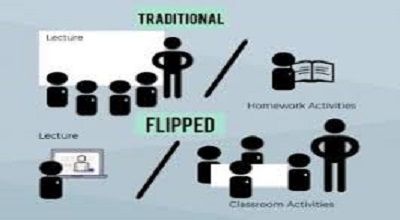Flipped Classroom
The flipped classroom approach is an educational strategy that reverses traditional teaching methods. In a typical classroom, students listen to lectures or receive direct instruction from the teacher during class time. Then complete homework or assignments independently at home. In contrast, the flipped classroom flips this model:
- Pre-Class Learning: Students are provided with instructional materials, such as videos and readings. Or online resources, to review before coming to class. These materials introduce them to the core concepts and content that will be covered in the upcoming lesson.
- In-Class Activities: Class time is primarily dedicated to active learning activities, discussions, and group work. And hands-on exercises related to the pre-class materials. The teacher becomes more of a facilitator or coach, helping students apply. What they’ve learned, address questions, and engage in collaborative learning experiences.
The flipped classroom approach offers several potential benefits:
- Personalized Learning: Students can go through pre-class materials at their own pace. Giving them the opportunity to grasp fundamental concepts before the in-person class.
- Active Engagement: In-class activities encourage active participation, problem-solving, and critical thinking. Which can lead to a deeper understanding of the subject matter.
- Flexibility: Students can access pre-class materials at any time, allowing for greater flexibility in their schedules.
- Teacher-Student Interaction: Teachers have more one-on-one time with students during class to provide individualized support and address specific questions or difficulties.
- Peer Collaboration: In-class group activities promote peer-to-peer learning and collaboration.
- Improved Homework Completion: Because students have already been introduced to the material. They may find it easier to complete homework assignments effectively.
Final Words
However, the successful implementation of the flipped classroom approach requires careful planning. Consideration of students’ access to technology and their readiness for self-directed learning. And the development of engaging pre-class materials. Additionally, not all subjects or topics may be suitable for this approach. Some educators may choose to blend elements of the flipped classroom with traditional teaching methods to create a hybrid learning environment.
